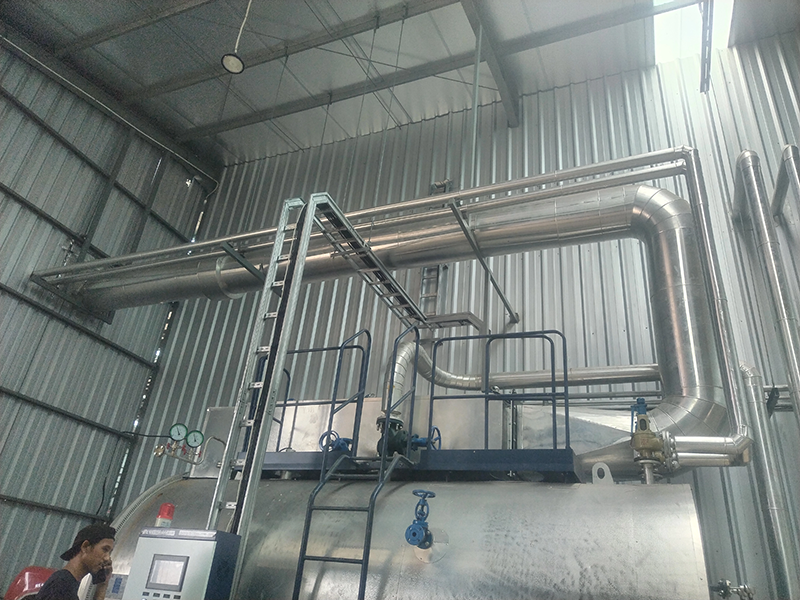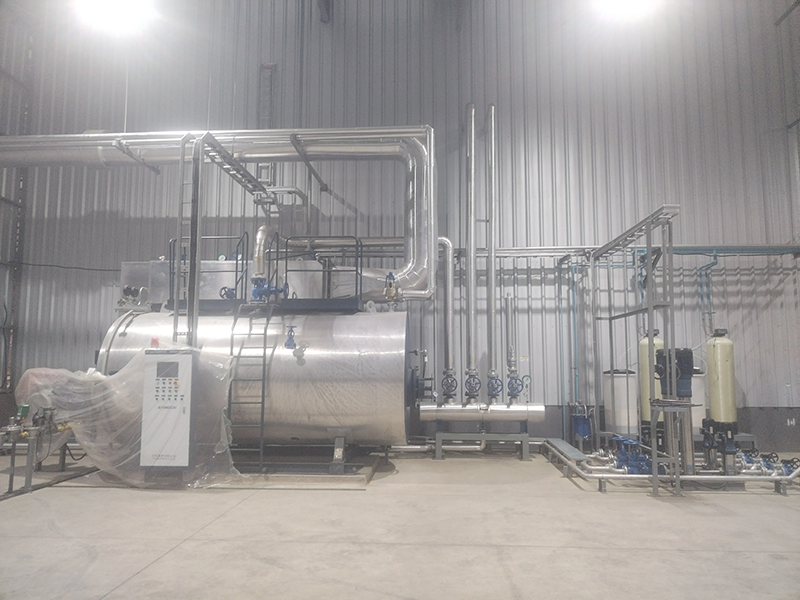


This article details the successful installation of the WNS4-2.0-YQ gas steam boiler in an Indonesian food factory, improving steam supply and efficiency. The project was completed in 7 days, with positive feedback on performance and service.
Recently, our company successfully supplied and installed a WNS4-2.0-YQ fuel (gas) steam boiler for a factory in Indonesia. The factory specializes in food processing and has high requirements for stable steam supply and energy efficiency.

The WNS4-2.0-YQ is a high-efficiency, energy-saving, and environmentally friendly horizontal fuel (gas) steam boiler with the following advantages:
After receiving the order, we promptly organized production and conducted rigorous quality inspections before shipping the boiler to Indonesia. Our team of professional engineers provided on-site technical guidance, and the installation, pipeline connection, and commissioning were completed within 7 days.
After commissioning, the boiler has been running smoothly, providing stable steam supply with low fuel consumption, significantly reducing production costs. The advanced automatic control system makes operation easier and minimizes labor costs.

The factory manager stated:
"This boiler has exceeded our expectations with its high efficiency and stable operation. The steam supply is sufficient, greatly improving our production efficiency. We highly appreciate the high-quality product and professional service provided by your company!"
The successful installation of the WNS4-2.0-YQ boiler in Indonesia further demonstrates the reliability and competitiveness of our products. We remain committed to providing high-quality boiler solutions worldwide and contributing to cleaner energy applications across industries.



Recently, a 4-ton steam boiler project was successfully completed and delivered, marking that the technical strength and service level in this field have once again been highly recognized by the market. This transaction not only demonstrates the tacit understanding and efficiency of the two parties in technology matching, demand understanding and project execution, but also injects strong momentum into the customer's capacity improvement and business expansion.
From initial communication to scheme design, production and manufacturing, to installation and commissioning, every link of the 4-ton steam boiler project has been carefully planned and strictly controlled. The project team has a deep understanding of customer needs, combined with its production process and steam usage characteristics, and tailored a set of efficient, energy-saving and easy-to-maintain steam supply solutions. By adopting advanced combustion technology and heat exchange design, the boiler not only ensures stable steam output, but also greatly improves energy utilization efficiency, meeting customers' urgent needs for energy conservation and emission reduction.

During the project execution process, the team overcame multiple challenges such as time constraints and technical complexity to ensure that the boiler was delivered on time, according to quality and quantity. After the installation, the professional team also conducted comprehensive performance testing and operation training to ensure that the customer's operators can master the daily operation and maintenance skills of the boiler, laying a solid foundation for the subsequent long-term stable operation.
The successful delivery of the 4-ton steam boiler not only provides strong support for the customer's production line upgrade, but also sets a new cooperation model for the industry. It once again proves that in the field of boilers, through in-depth market insights, professional technical accumulation and efficient project management capabilities, it can effectively meet the diverse needs of customers and promote industrial upgrading and green development.

Looking to the future, with the in-depth development of Industry 4.0 and intelligent manufacturing, the demand for efficient and environmentally friendly steam supply solutions will continue to grow. We will continue to uphold an innovative and pragmatic attitude, continuously improve our technical strength and service level, provide customers with more high-quality and efficient boiler products and solutions, and work together to create a more brilliant tomorrow.








